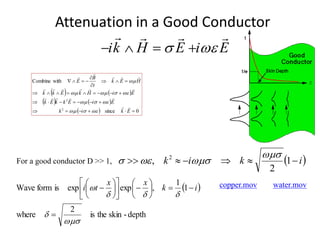The document discusses Maxwell's equations and electromagnetism, providing an overview of Maxwell's equations which describe the relationship between electric and magnetic fields, motion of charged particles in electromagnetic fields, electromagnetic wave propagation, and basic vector calculus equations. It also lists several textbooks for further reading on classical electromagnetism and provides the source-free and source Maxwell's equations in vacuum.
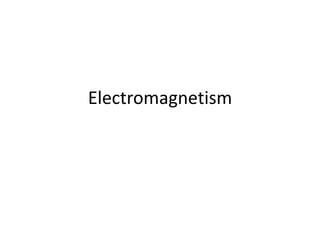

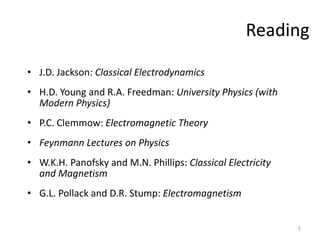
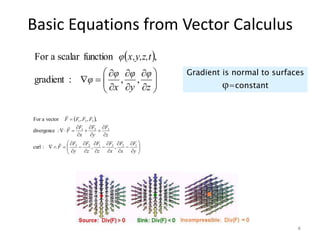
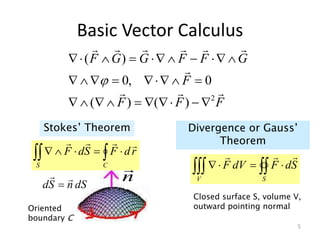
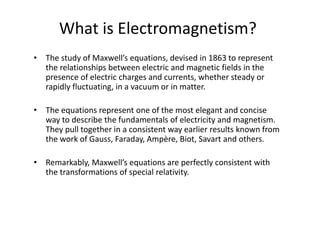
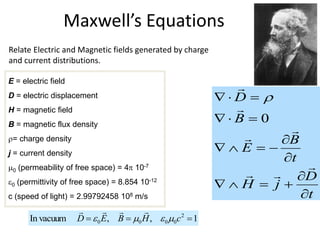
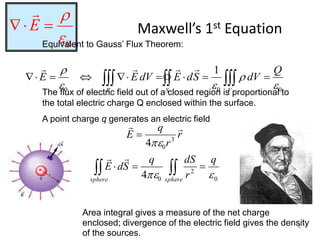
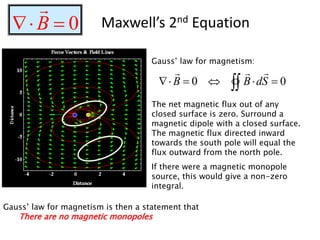


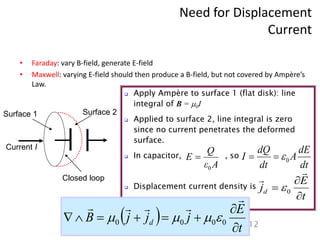
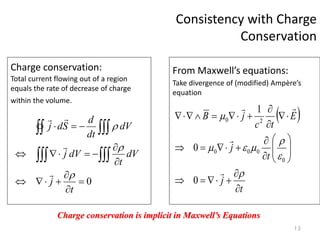
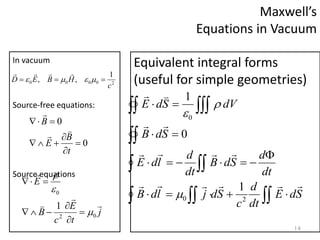


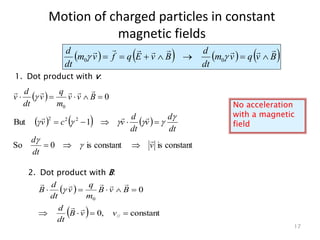



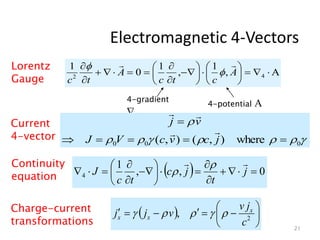



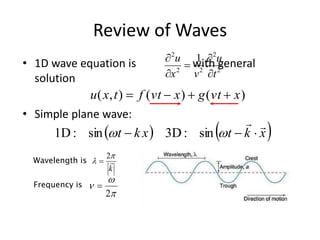

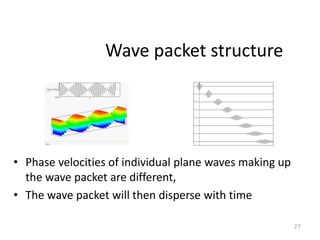
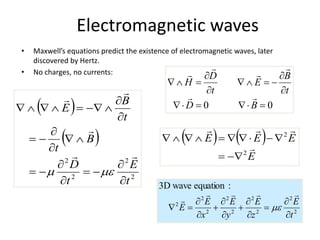
![Nature of Electromagnetic Waves
• A general plane wave with angular frequency travelling in the direction
of the wave vector k has the form
• Phase = 2 number of waves and so is a Lorentz invariant.
• Apply Maxwell’s equations
)]
(
exp[
)]
(
exp[ 0
0 x
k
t
i
B
B
x
k
t
i
E
E
i
t
k
i
B
E
k
B
E
B
k
E
k
B
E
0
0
Waves are transverse to the direction of propagation,
and and are mutually perpendicular
B
E
,
k
x
k
t
](https://image.slidesharecdn.com/electromagnetism-221028174556-37abef8f/85/Electromagnetism-pptx-29-320.jpg)
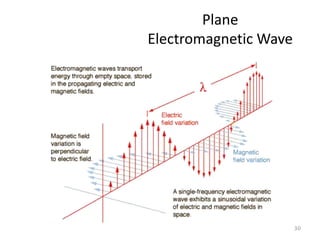
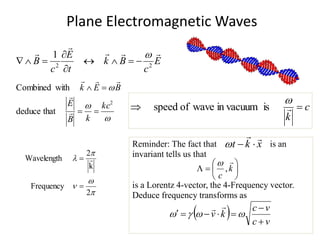
![Waves in a Conducting Medium
• (Ohm’s Law) For a medium of conductivity ,
• Modified Maxwell:
• Put
E
j
D
t
E
E
t
E
j
H
E
i
E
H
k
i
conduction
current
displacement
current
)]
(
exp[
)]
(
exp[ 0
0 x
k
t
i
B
B
x
k
t
i
E
E
4
0
8
-
12
0
7
10
57
.
2
1
.
2
,
10
3
:
Teflon
10
,
10
8
.
5
:
Copper
D
D
Dissipation
factor](https://image.slidesharecdn.com/electromagnetism-221028174556-37abef8f/85/Electromagnetism-pptx-32-320.jpg)
